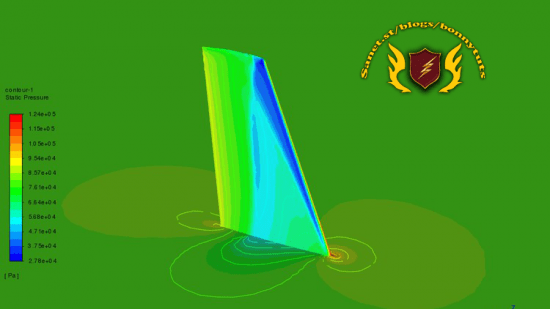
Published 11/2022
Created by Sijal Ahmed
MP4 | Video: h264, 1280×720 | Audio: AAC, 44.1 KHz, 2 Ch
Genre: eLearning | Language: English | Duration: 6 Lectures ( 1h 25m ) | Size: 1.58 GB
Learn CFD analysis and validation for complex case in one hour
What you’ll learn
Learning high quality CFD analysis for aerodynamic flows
ANSYS workbench
Mesh generation for complex geometries such as ONERA M6 wing in ANSYS Meshing
Setting up Aerodynamics problem in Fluent with optimum settings
Getting Cd, Cl, Cm from CFD and comparison with high quality CFD data from NASA
Validation of results though experimental data
Requirements
Basic knowledge of CFD and aerodynamics
ANSYS 2022 R1 professional or later installed on your computer
Computer with i3 or better processor and 16 GB or better
Description
This course aims the aspirants who want to advance their knowledge in aerodynamic CFD. Students will learn to apply ANSYS CFD package suit to solve a complex 3D test case known as “ONERA M6 wing”This course is designed to take advantage of ANSYS workbench’s integrated and simple environment to concentrate on learning rather than going into complex software learning. The student will learn to import geometry and inspect it. After that students will set the proper environment in ANSYS workbench meshing to define sizes for different geometry features. We will also use the size function to capture tight curvature on the tip region of the wing. We will also apply a body of influence to refine the mesh in the wake region and region around the wing to capture important flow features.We will set up boundary conditions, material properties, turbulence models, flow schemes, solvers, report definitions, and convergence criteria. We will use FMG (FAS multigrid) to accelerate convergence and we will use solution steering to automatically increase or decrease courant to accelerate solution convergence.We will use NASA data for drag, lift, and moment coefficient to compare our results for similar parameters. We will also use experimental Cp (coefficient of pressure) values at different span locations of the wing to compare and validate our CFD. And we also discuss results in terms of pressure contours etc.
Who this course is for
Mechanical and aerospace students and professionals
Password/解压密码www.tbtos.com
转载请注明:0daytown » CFD analysis and validation of ONERA M6 in ANSYS Workbench